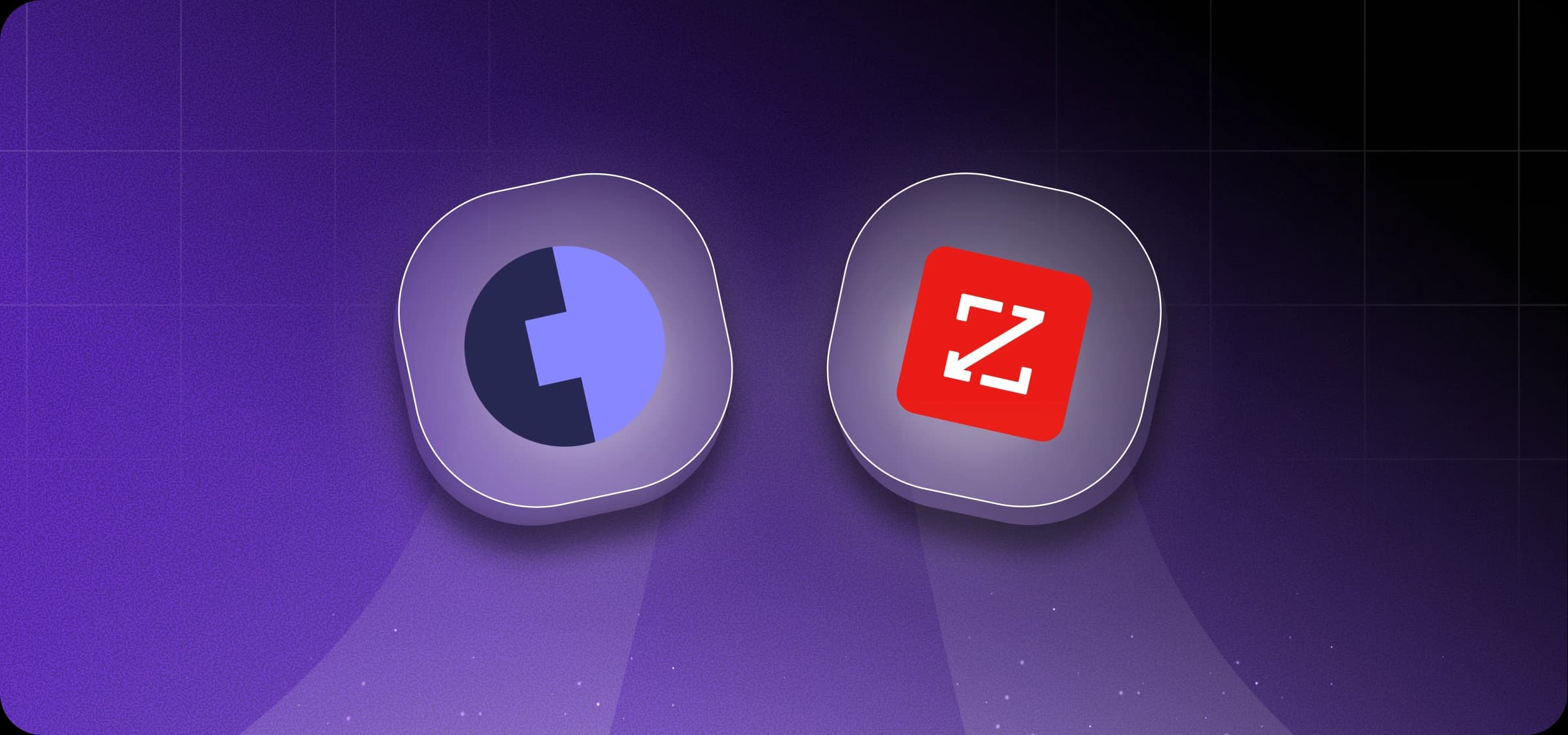If you’re choosing a B2B data platform for lead generation, two names dominate the conversation: Cognism and ZoomInfo.
Both are packed with contact data, intent signals, and sales tools, but they’re built for very different teams.
Here’s how they compare and how to decide which one suits your outbound strategy best.
Cognism vs. ZoomInfo: Quick Comparison
ZoomInfo is a popular choice for enterprise teams and larger outbound operations within mid-market companies focused primarily on North American markets.
Cognism mainly serves mid-market companies and small businesses targeting EU-based leads.
Cognism | ZoomInfo | |
Ideal Users | Best for mid-market companies and SMBs targeting EMEA | Best for enterprise and mid-market teams in the US |
Data Compliance | GDPR-first with strong compliance and audit trails, supports 13 European do not call lists | Has compliance tools, supports four European do not call lists |
Pricing | Seat-based pricing, predictable, no credits | Credit-based pricing |
Database Focus | Focus on verified mobile numbers and clean data | Extensive database with broad US and global coverage |
AI Features | AI-assisted lead prioritization included | AI (Copilot) as an add-on |
Market Focus | Stronger in EMEA/APAC markets | Dominates the North American market |
Automation Tools | Lacks built-in engagement tools | Built-in workflows, sequencing and engagement tools |
ZoomInfo Overview
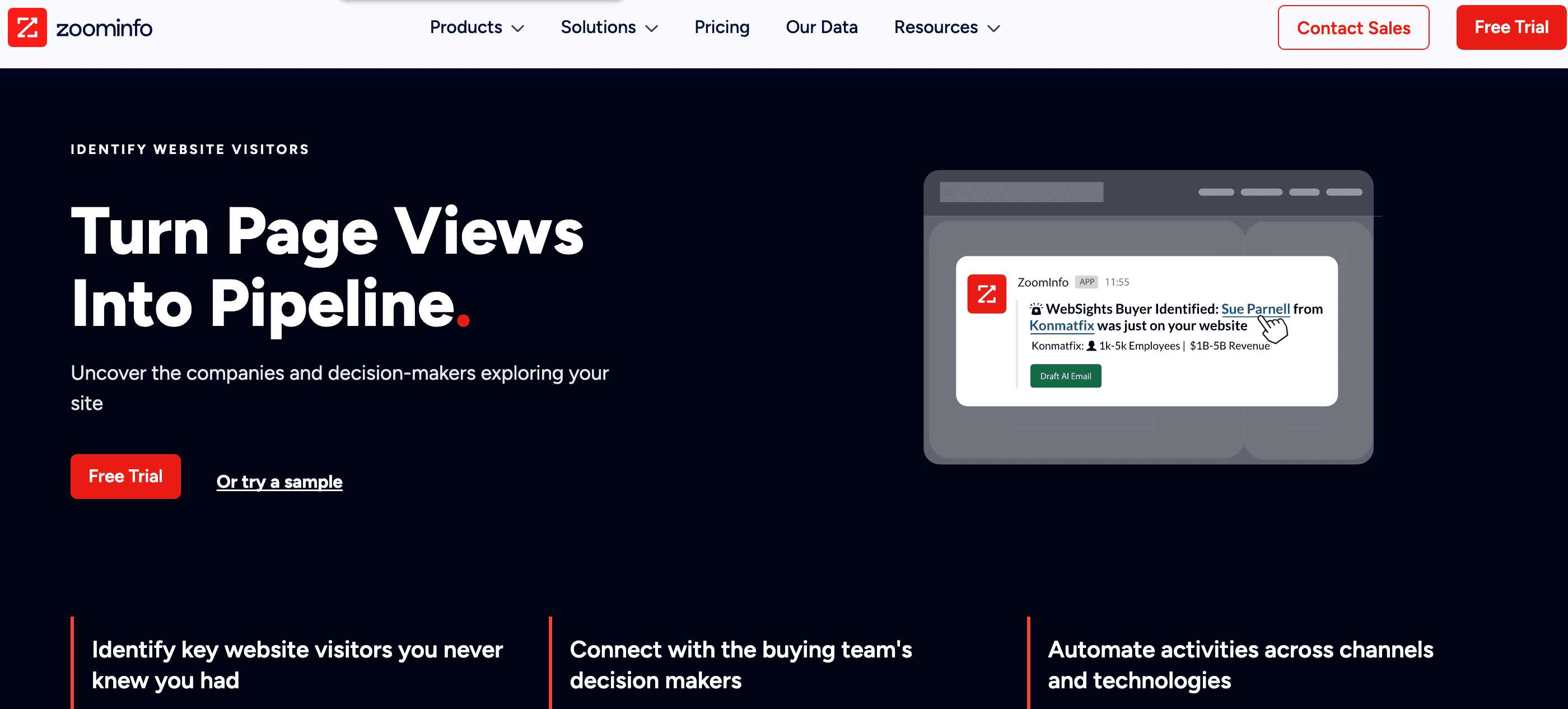
ZoomInfo is a heavyweight in the B2B data space. The database ZoomInfo offers is massive, especially if you're targeting the US, and it’s packed with tools for both outbound sales and marketing teams.
Key Features
Functionality for sales (prospecting) and marketing (campaign-driven growth).
Access to over 200 million professional profiles and 34 million company records across global markets.
Direct dial phone numbers, work emails, and department-level contact information.
Engagement tools that include a website chat, a direct phone dialer, and email workflows.
Website visitor tracking that tells you which corporate accounts are visiting your site and instantly drives them to your pipeline.
Buyer intent data that highlights companies actively researching your solution.
ZoomInfo Copilot, an AI agent that helps sellers prioritize accounts, suggests outreach actions, and generates insights using real-time data.
Native integrations with Salesforce, HubSpot, Outreach, Salesloft, and other major sales tools.
Pricing and Structure
ZoomInfo runs on a credit system—every time you export or reveal contact info, it burns credits. You can’t just pay for a seat and use it freely.
Plans are split by use case—Sales, Marketing, and Talent. Pricing isn’t listed publicly, but most teams spend at least $15K per year as a minimum.
With ZoomInfo, costs go up fast. You’ll pay more for extra seats, in-depth intent data, workflows, and other add-ons—all locked into an annual contract.
Pros and Cons
ZoomInfo pros:
Users have access to a very large database with great data coverage.
The platform has strong native integrations with tools like Salesforce, HubSpot, Outreach, and Salesloft.
Built-in workflows and engagement tools let you run outbound directly from the platform if you want to.
ZoomInfo cons:
Pricing is complicated and full of add-ons; it’s easy to spend way more than expected.
Contact info is sometimes stale (but this is the case with most prospecting platforms).
The interface can feel clunky and overwhelming if all you need is a database.
Cognism Overview
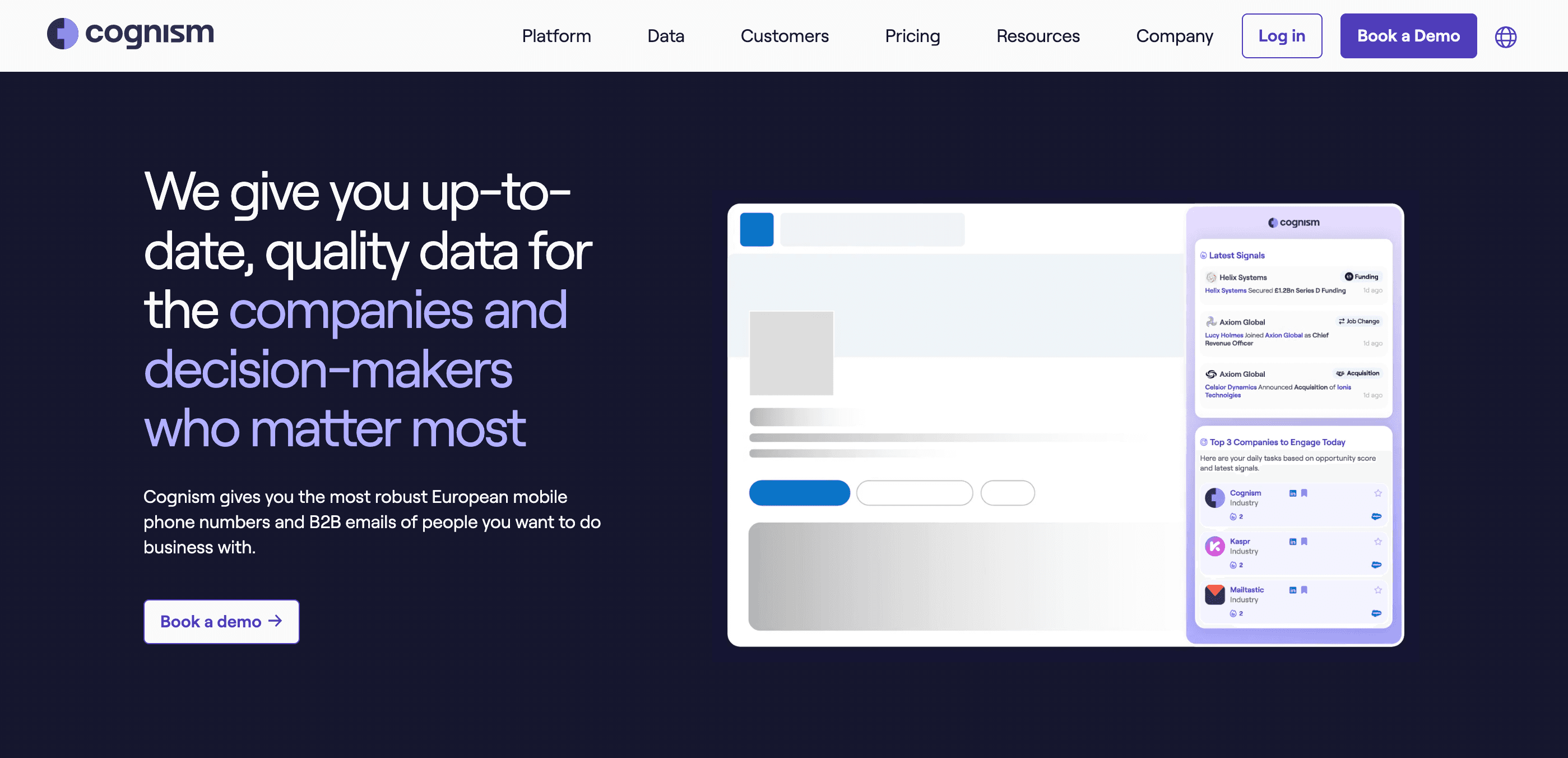
Cognism is a prospecting tool built for leaner teams that care about clean data, up-to-date mobile numbers, and complying with relevant regulations—particularly in Europe.
It’s not as bulky as ZoomInfo, but that’s kind of the point. What it lacks in bells and whistles, it makes up for with verified contacts and a simpler setup.
Key Features
Cognism is a compliance-first platform, with data processes that adhere to regulations and clear audit trails.
The database is highly accurate, packed with human-verified mobile numbers and detailed company and contact info.
70% of its dataset is exclusive to Bombora (its main data partner), and you can track intent signals across more than 12,000 topics (these are essentially distinct verticals).
Cognism’s Chrome extension lets you pull data straight from LinkedIn, company sites, and CRMs as you’re browsing.
The Sales Companion AI tool surfaces the best accounts to reach out to and recommends which to contact first.
It integrates well with tools like Salesforce, HubSpot, and Outreach, quickly and cleanly without needing custom workarounds.
Pricing and Structure
Cognism pricing is based on seats, not credits. Users get full access to the database without having to worry about usage limits.
There are two main tiers:
Grow includes only demographic and firmographic data.
Elevate adds intent data like job changes, funding, etc.
Pricing isn’t listed publicly, but expect to pay around €20K per year for 10 seats on a standard 12-month contract.
Pros and Cons
Cognism pros:
Cognism calls its data “Diamond Data”, and it mostly lives up to the name.
High mobile number connect rates.
Predictable pricing with no usage-based surprises.
Cognism cons:
Limited coverage in North America compared to ZoomInfo.
Fewer built-in engagement tools.
Occasional issues with certain integrations.

Key Differences Between ZoomInfo and Cognism
ZoomInfo and Cognism might seem similar on the surface. But dig a little deeper, and you’ll spot some major differences.
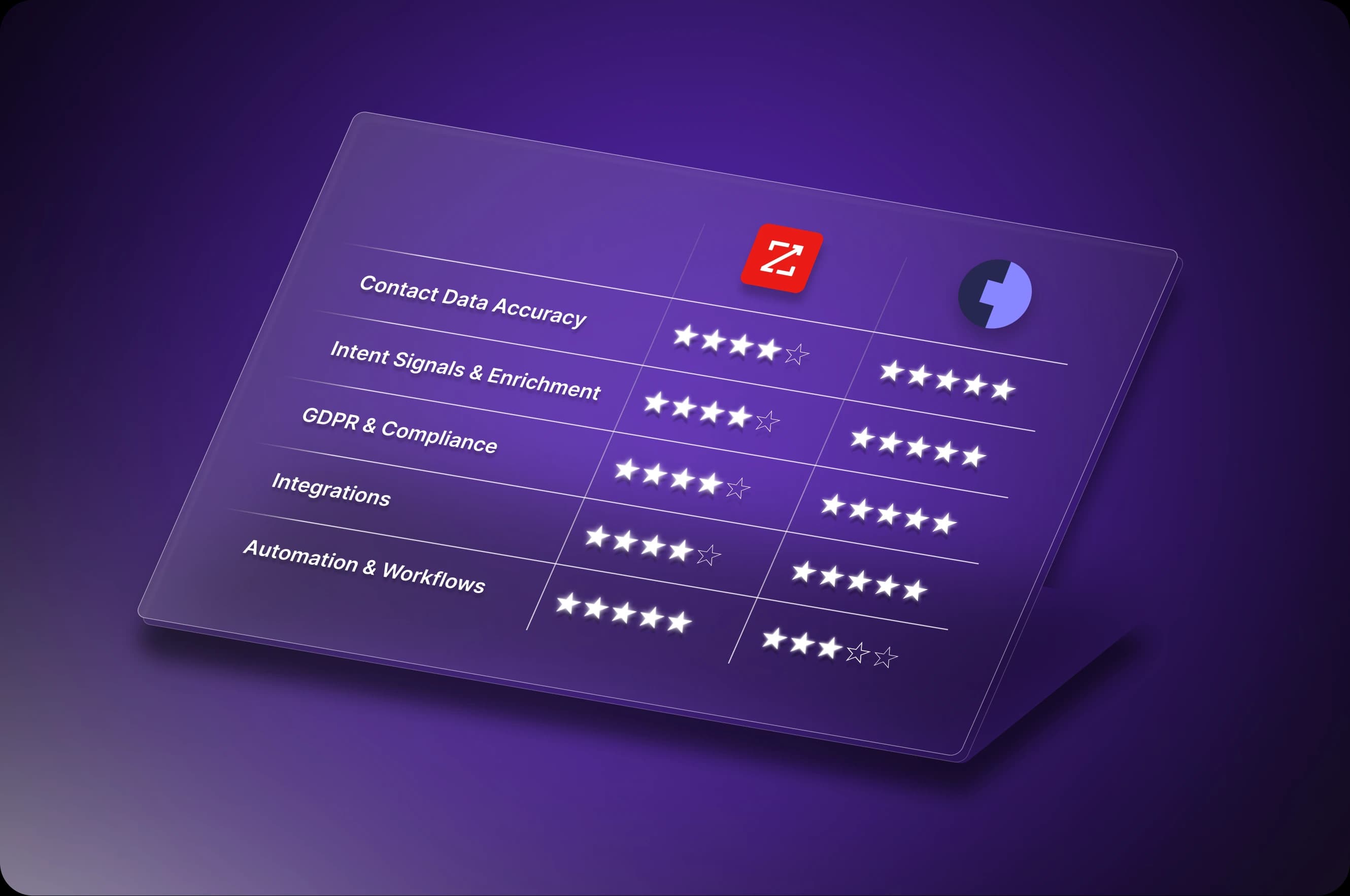
Contact Data & Phone Accuracy
ZoomInfo has one of the biggest B2B contact databases out there. Every contact comes with a confidence score so you can gauge how accurate the info might be before pulling it.
Cognism is also on top of its game when it comes to verified mobile numbers and overall data cleanliness. The pool is smaller, but every contact detail, especially mobile numbers, has already been double-verified.
Intent Signals and Enrichment
ZoomInfo uses proprietary and third-party intent data covering 5,000 topics (or verticals) to help identify companies actively researching your solution. Cognism takes it further with Bombora-powered intent data across 12,000 topics.
Cognism also includes AI-assisted search and personalization by default. You don’t need to purchase an add-on like you do with ZoomInfo.
GDPR & Compliance
Cognism’s data is built with data privacy and GDPR compliance at its core, so you don’t have to worry about it. It scrubs all mobile numbers against 13 European do not call (DNC) lists.
ZoomInfo is also CCPA and GDPR compliant. However, it verifies phone numbers against fewer DNC lists, and more compliance administration and configuration is left to the user.
Integrations & Extensions
ZoomInfo generally plays well with major CRMs, including Salesforce, HubSpot, and Outreach. Most integration hiccups—especially with Salesforce—are a result of the complexity of the CRM setup rather than ZoomInfo itself.
Cognism connects with a similar number of CRMs. Thanks to the platform’s simplicity and the fact that users typically have less complex workflows, its integrations tend to run slightly smoother.
Automation and Workflows
ZoomInfo comes with built-in sales engagement tools so sales teams can run outreach directly from the platform—calls, emails, and requests all in one place. Its AI (ZoomInfo Copilot) also suggests actions to take next, helping sellers move faster with nudges sent from the platform.
Cognism doesn’t offer native sequencing, but it integrates tightly with tools like Outreach and Salesloft. The Sales Companion feature surfaces best-fit leads first using AI-guided research and prioritization.
Data Quality and Coverage
The most important thing most teams look at in a data platform is contact quality. Here's how the two platforms compare on that front.
Global vs. Regional Strength
ZoomInfo is still the go-to option for North America—its coverage there is hard to beat.
Lately, they’ve also been pushing to expand globally, claiming a six-fold increase in global data, especially in EMEA. It’s a step in the right direction, but they’re not quite at the top yet.
Cognism, by contrast, leads in EMEA and APAC but isn’t as strong as ZoomInfo for US-based targeting.
Freshness and Verification
“No one has perfect data, but ZoomInfo’s up there with the best” is a common sentiment among ZoomInfo users. It uses machine learning to verify and refresh contact data continuously, so overall, its data can be considered high-quality.
Cognism has a more rigorous verification process: human verification on an 18-month rolling cycle. It’s especially strong on compliance (which is why they’re so strong in EMEA).
In practice, contact data quality across both platforms is pretty comparable. Though Cognism often pulls ahead slightly thanks to its phone number database, which is checked against do not call lists for 13 countries.

Pricing Models and Contracts
If you put ZoomInfo and Cognism side by side, how do their pricing models compare?
ZoomInfo Pricing
Credit-based pricing with burn per action (export, reveal, etc.)
Annual contracts only
Lots of upsells: extra seats, workflows, AI, and premium data
Costs can spiral fast without strict internal usage controls
Cognism Pricing
Flat platform and per-user pricing structure
No usage caps
Two clear packages (Grow and Elevate)
Limited number of refreshable lists (you can buy extra)
Which is More Flexible?
Cognism is more flexible and far easier to budget for. Its flat pricing and unlimited usage mean you’re not constantly watching credit usage or paying extra to unlock features.
ZoomInfo, while powerful, is structured around upsells. You’ll need to manage usage tightly or risk costs going up fast.
When to Choose ZoomInfo or Cognism
ZoomInfo works best when…
You’re a large team selling into the US market and need deep contact coverage.
You rely on complex GTM workflows, deep analytics, and multiple tool integrations.
You can handle an annual contract and have budget flexibility for add-ons and extra seats.
You want built-in engagement tools on top of everything.
Cognism works best when…
Your outreach is focused on EMEA or APAC.
You want to have GDPR compliance taken care of.
Your outbound strategy heavily relies on cold calling, and you need verified phone numbers.
You prefer predictable, per-seat pricing and want to avoid credit-based limits.
What if you’re a mid-market firm?
While Cognism has a more predictable pricing model, neither of these platforms is cheap.
Even with flat pricing, you’re still looking at a five-figure annual contract to get started.
For lean teams, startups, or anyone without a dedicated outbound motion, both platforms can feel like overkill—too complex and too expensive for what you actually need.
And if you're looking for an all-in-one platform that covers both data and execution (like sequencing or campaign management), that’s not really what ZoomInfo or Cognism are built for.
Why Artisan Is a Smarter Third Option
If ZoomInfo and Cognism feel too heavy for your specific needs, Artisan offers a leaner, AI-first approach to outbound.
Ava BDR Ava Handles Everything
Most database tools just provide data—what happens after that is up to you. You still need to make decisions, develop a lead-nurturing strategy, and manage your campaigns manually.
Artisan’s AI BDR, Ava, automates the full outbound motion. She finds leads, enriches profiles, personalizes messages, and handles multi-channel outreach via email and social media.
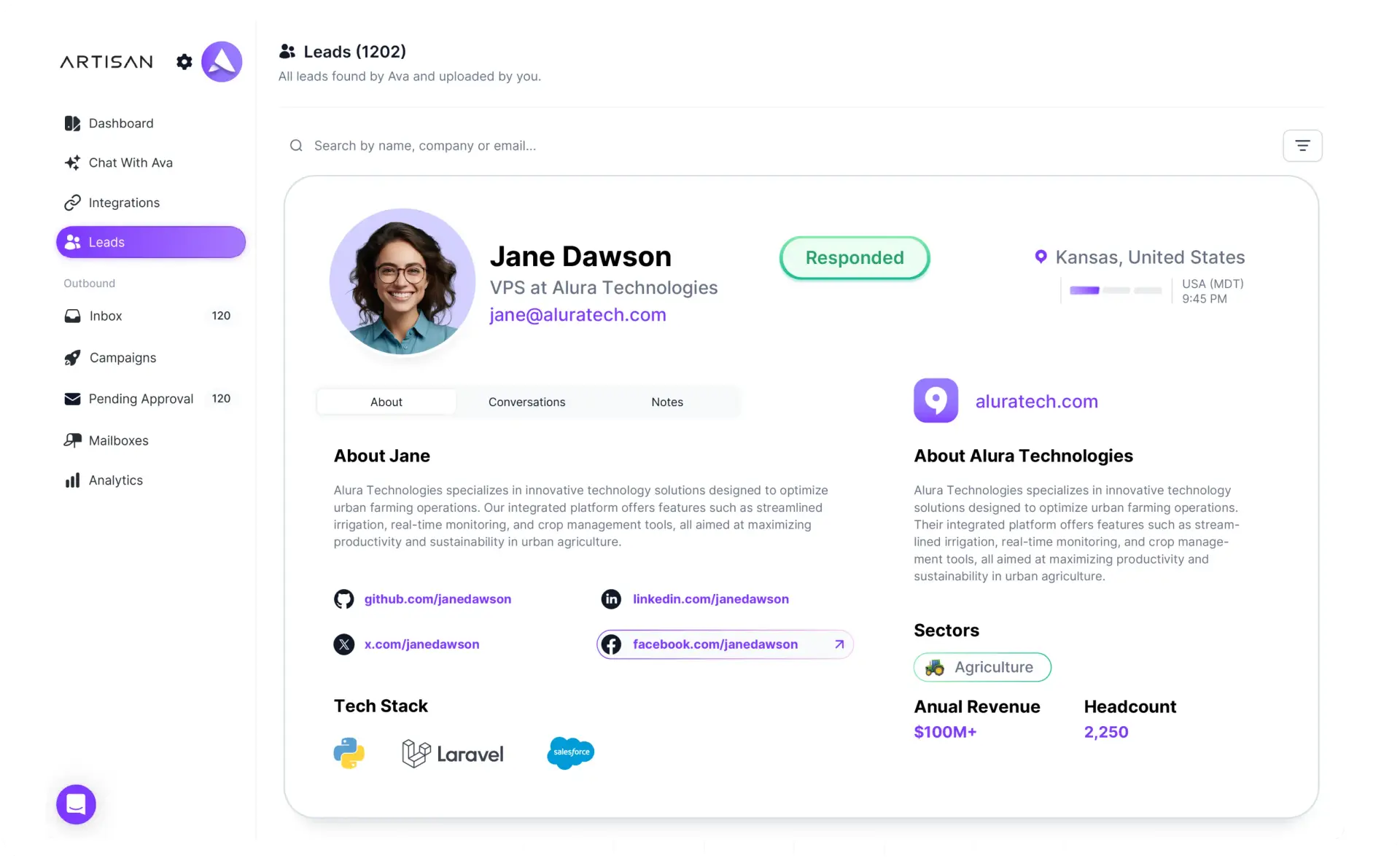
All-in-One Tool and No Stack Chaos
Cognism doesn’t include engagement tools. ZoomInfo does, but most B2B sales teams skip them in favor of dedicated platforms. Either way, you’re usually piecing together a stack with separate tools for lead discovery, data enrichment, warm-up, and outreach.
Artisan is built differently—it has a suite of tools for handling the whole outbound sales flow, meaning you won’t need (or want) third-party tools.
Local Data and Global Reach
Whether you’re targeting local business owners in Boston or mid-market sales reps in France, just set the right filters and have Artisan surface the right accounts in seconds.
Artisan gives you access to over 300 million verified B2B, ecommerce, and local contacts across a wide range of industries and regions. Its regularly enriched, hygiene-checked database is one of the best in the industry.
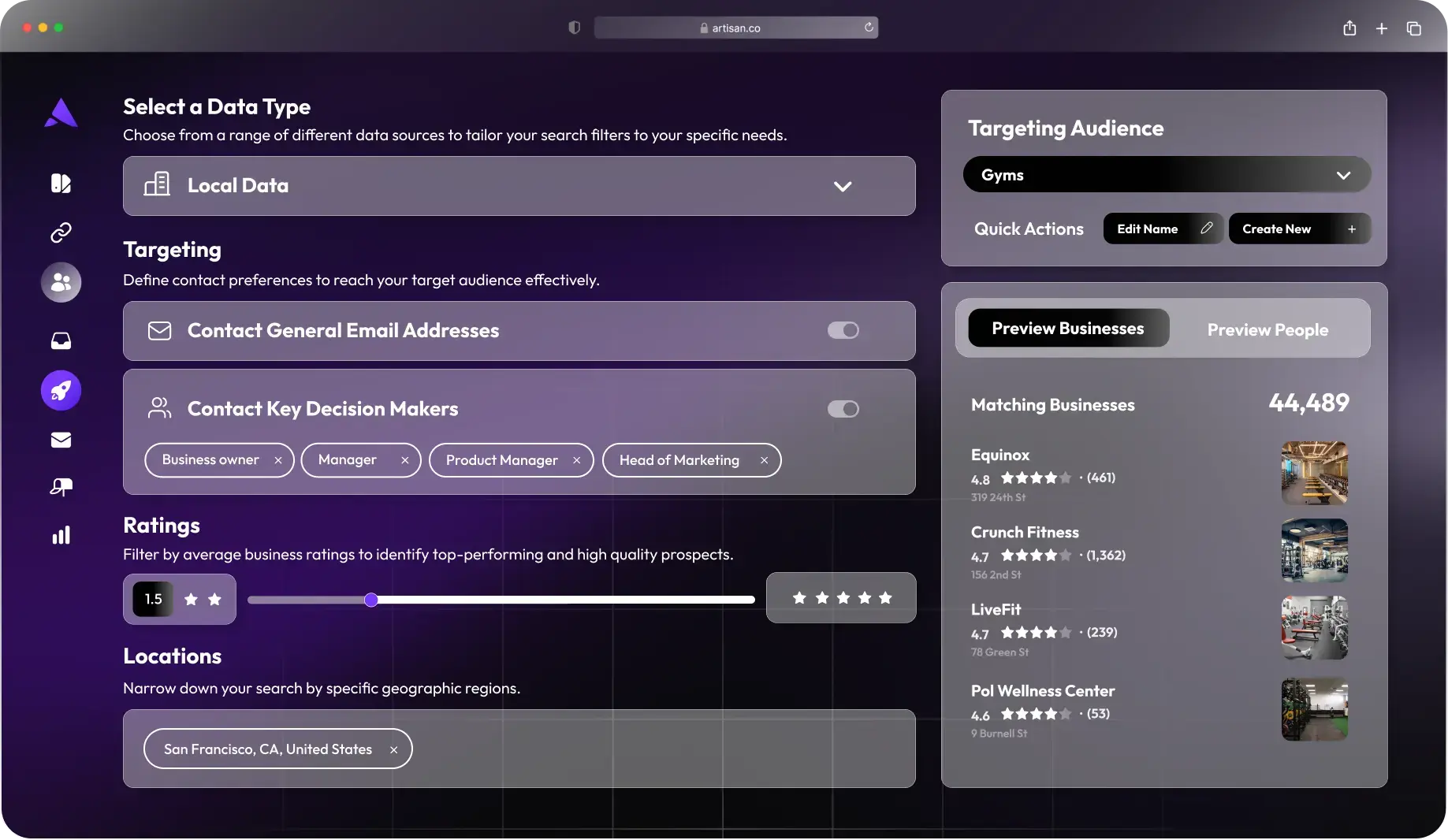
Predictable Pricing
For teams looking to avoid the complexity and the high costs of scattered outbound stacks—which can easily amount to $15,000 to $40,000 annually—Artisan offers a more budget-friendly alternative.
Unlike ZoomInfo or Cognism, where pricing can quickly balloon with extra seats, credits, and premium features, you get everything bundled into a single predictable bill.
Why Teams Love It
“We often are surprised with how many quality leads we’re getting. It’s proven to be so efficient and effective working with Artisan.” Tess Fenn, Communications and Growth Strategist at hpy
With Artisan, lean sales teams get enterprise-level results without the overhead or bloat that comes with legacy solutions.
As a unified platform, it combines all functionality into one user-friendly interface, empowering teams to focus on selling, not managing software.
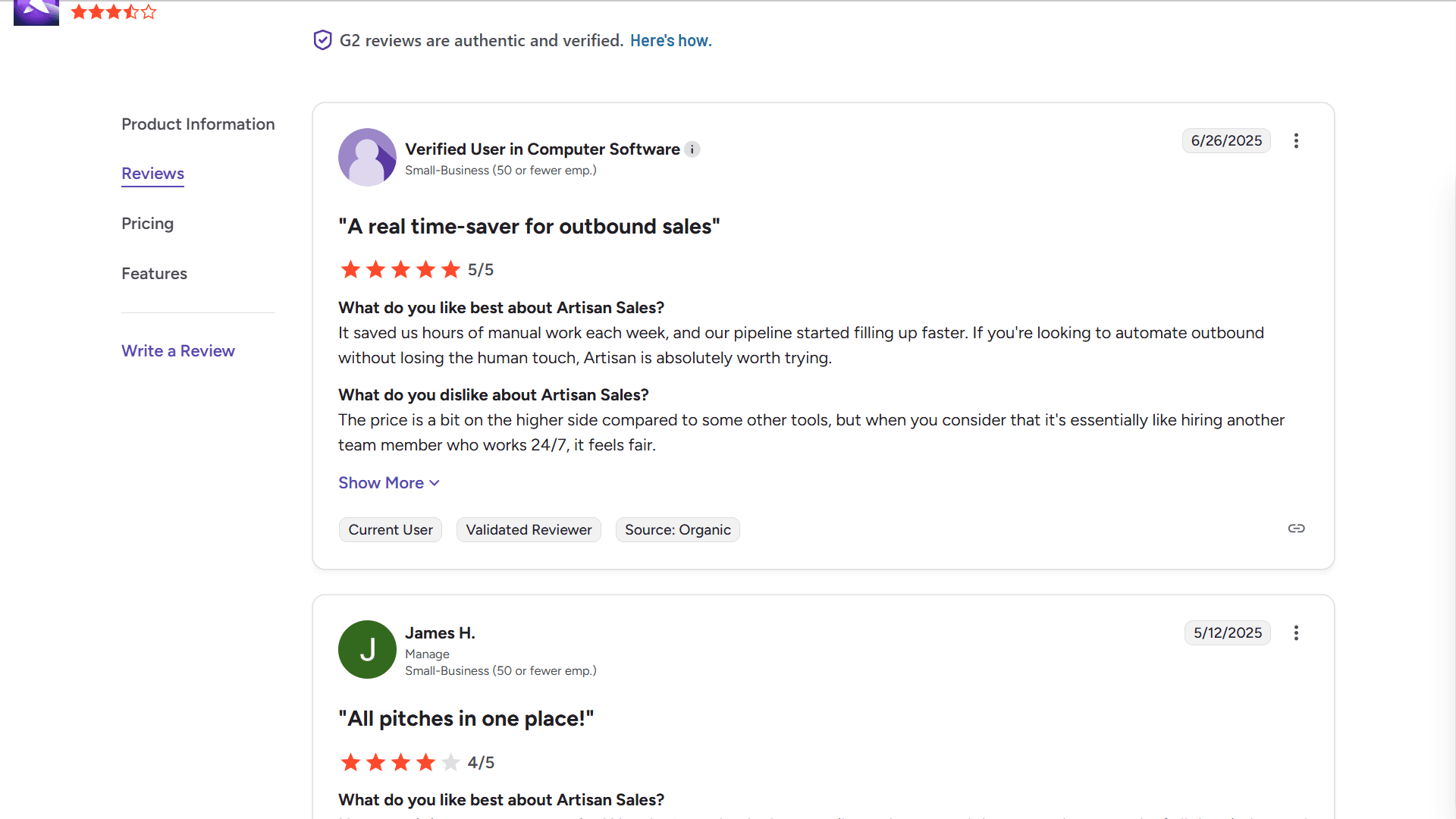
Final Verdict: Which Tool Wins?
Cognism performs well when you need to reach international markets, where data quality and compliance tend to be more complex. If you’re focused on EU-based audiences and want to cold call them, it’s definitely Cognism.
ZoomInfo feels like it’s made for big US-based enterprises, with all the analytics and workflows built around that kind of setup.
Artisan is ideal for teams of all sizes looking for access to a large database with a powerful layer of lead gen and nurturing tools on top. It combines solid, accurate data with sales automation and AI, replacing not just these tools but the whole messy tech stack around them.

